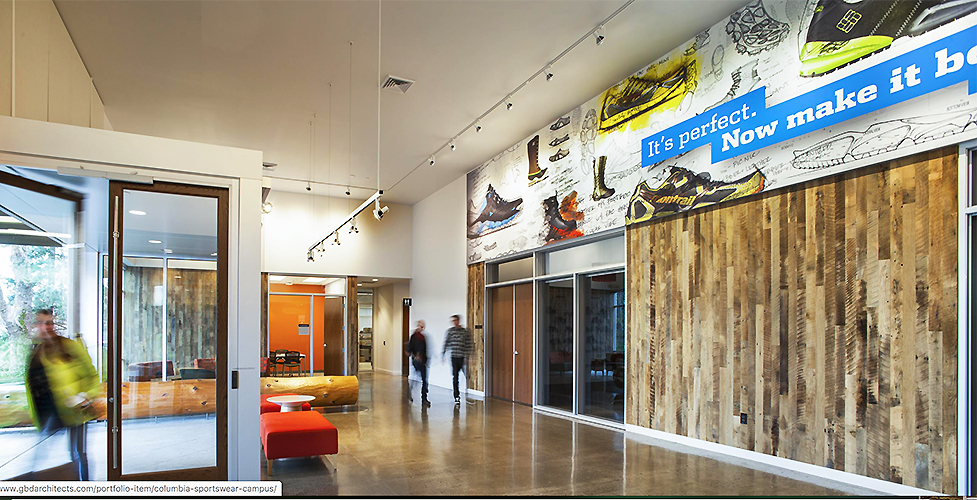By Thomas J. Ryan
<span style="color: #a6a6a6;">Columbia Sportswear reported fourth-quarter results, that generally came in line with guidance, and was able to surpass $3 billion in annual sales for the first time in its history. But company officials said heightened promotional activity held back gains in the period and continued investments would pressure earnings in 2020.
“In the fourth quarter, we experienced a challenging retail environment, particularly in outerwear, which resulted in higher levels of promotional activity in our DTC business and higher closeout sales in our wholesale business, as we took actions to reduce inventory levels,” said Tim Boyle, chairman, president and CEO, on a conference call with analysts.
He added, “Globally, many regions also experienced weather that was meaningfully warmer than historical averages, particularly late in the quarter. In this environment, we delivered results generally in line with our guidance, including strong sales growth for the Sorel brand.”
In the quarter ended December 31, sales increased 4.1 percent to $954.9 million, exceeding Wall Street’s guidance of $951.5 million. Net income inched up 0.6 percent to $114.0 million, or $1.67 per share, also just topping Wall Street’s consensus estimate of $1.65.
Gross margins declined 160 basis points to 50.1 percent. The erosion was attributed to a higher proportion of lower gross margin closeout product sales in wholesale, and lower direct-to-consumer (DTC) product margins reflecting higher promotional activity and shifts in product mix. These headwinds were only partially offset by Project Connect benefits, including its design-to-value, assortment optimization and manufacturing efficiency initiatives.
SG&A expenses increased 5.5 percent to $344.4 million, and also expanded to 36.1 percent of sales from 35.6 percent a year ago. On a non-GAAP basis, SG&A expenses were 35.4 percent of sales in the year-ago quarter. The SG&A increase reflected expenses to support expanding DTC operations, increased information technology spending, increased personnel expense to support growth and strategic projects and increased marketing costs.
Operating income decreased 9.3 percent to $138.6 million. Against pro-forma operating earnings in the year-ago period, operating earnings were down 10.3 percent. The higher net earnings reflected lower tax expenses.
In the U.S., sales were up 7.6 percent, driven by high single-digit percentage growth in wholesale and mid-single-digit percent growth in DTC, which was driven by new store openings and a high single-digit percentage increase in e-commerce.
Wholesale growth was primarily driven by higher closeout sales. In DTC, the performance was impacted by a challenging holiday sales environment, particularly in outerwear and difficult comparisons versus exceptional sales performance in the prior year.
For the year, U.S. sales grew 12 percent, led by mid-teens wholesale growth and high single-digit DTC growth, which was comprised of mid-single-digit brick-and-mortar growth and low teens percent increase in e-commerce.
In 2020, U.S. net sales are expected to increase high single-digit percent, including high single-digit percent growth in DTC and mid-single-digit percent growth in wholesale.
In the LAAP region, sales were down 4.3 percent to $171.6 million and off 4 percent on a currency-neutral basis. China’s sales decreased mid-single-digits due to lower wholesale sales and relatively flat DTC performance. The termination of one of the company’s wholesale dealers contributed to lower wholesale sales. Korea’s sales decreased low-double-digit percent (mid-single-digit percent constant-currency), driven by lower DTC sales. Continued weakness in the Korean outdoor market combined with warm weather impacted sales.
LAAP distributor sales decreased mid-teens percent primarily driven by a greater portion of fall shipments falling into the third quarter versus the prior year. Japan’s sales increased high-single-digit percent (low-single-digit percent constant-currency).
EMEA revenues grew 6.5 percent to $99.8 million and gained 10 percent on a currency-neutral basis. EMEA distributor net sales increased mid-teens percent, driven by higher spring advance orders and favorable timing of spring shipments, with a greater portion falling into the fourth quarter than the prior year. Europe-direct sales increased low-single-digit percent (mid-single-digit percent constant-currency).
In Canada, revenues were down 10.5 percent to $49.5 million and were off 10 percent on a currency-neutral basis. The decline was driven by a greater portion of fall shipments falling into the third quarter this year versus the prior year, partially offset by DTC growth.
<span style="color: #a6a6a6;">By brand, Columbia’s sales rose 3.2 percent to $751.1 million and moved up 4 percent on a currency-neutral basis. The gains were led by U.S. wholesale, U.S. DTC and EMEA growth, partially offset by a decrease in sales in the LAAP region.
Sales for the Columbia brand grew 10 percent in the year. Highlights in the year included the PFG line, which experienced strong sell-through in 2019 and saw total sales, including apparel and footwear, surpass $200 million in 2019.
In the fourth quarter, footwear outperformed the brand overall, driven by top-selling styles, including the Newton Ridge and newer innovations. He called out buzz around the SHFT product launch in August as a sign of the ”progress we made toward unlocking the Columbia brand’s long-term footwear opportunity during the year.”
In apparel, he noted that Men’s Health called out the Interchange Jacket as one of their 10 best ski jackets for men and Forbes featured the women’s Heavenly Long Hooded Jacket. In footwear, Business Insider featured the Omni Heat.
Said Boyle, “This season, Columbia’s marketing efforts included the Heat Seal campaign, which encompassed a unified marketing message and marketing assets that were leveraged globally. We also implemented key city plans in New York and Denver to drive increased brand awareness during the quarter. In 2020, we will continue to focus our marketing efforts on key markets and highlight our innovative product, including celebrating Omni Heat’s 10-year anniversary.”

Sorel’s revenue jumped 13.1 percent to $143.5 million and gained 14 percent on a currency-neutral basis. The gains were led by U.S. wholesale and U.S. DTC growth. For the year, Sorel’s sales grew 22 percent and Boyle said the gains reflect efforts to reposition the brand as a year-round function-first footwear brand.
“During the quarter, Sorel’s evolution beyond this legacy winter utility business was once again evident, as consumers continue to demand more wearable style-focused products,” said Boyle. “Sorel continues to see the positive impact coming off the brand’s Mile Long Runway event held in New York City in October as evidenced by an increase in consumer awareness, engagement and ultimately, omnichannel sales.”
For 2020, mid-teens sales growth is expected for Sorel.
Prana’s sales declined 9.8 percent in the quarter to $33.1 million and were down 10 percent on a currency-neutral basis. The decline was primarily driven by a decline in U.S. wholesale.
Overall, Boyle described 2019 as a “transition year” as the brands’ distribution is being reset. Sales were down 3 percent for the year. Boyle said the company was encouraged by “robust” e-commerce sales for Prana in the quarter in response to updated offerings.
“The brand is focused on elevating the style of its product to differentiate them from their competitive set. They also have launched their new global tag line, ‘Clothing for a Positive Change,’ said Boyle. “This has provided them with a broader and far stronger platform for inspiring social and environmental change.”
He added that in 2020, the Prana team will focus on growing brand awareness, solidifying the brand’s position at the intersection of style and outdoor and unlocking product category opportunities. He added, “We expect the Prana brand net sales in 2020 to grow mid-single-digit percent, with sales growth more weighted toward the second half of the year. We believe product clothing for a positive change message resonates with consumers, and we’re taking necessary steps to drive sustainable long-term growth.”
Mountain Hardwear’s revenues were up 4.2 percent to $27.2 million and ahead 5 percent currency-neutral due to U.S. wholesale growth.
Mountain Hardwear’s sales were relatively flat for the year and Boyle described 2019 as a “transformational year” for Mountain Hardwear as its product range was revamped and success was found reestablishing the brand at key U.S. wholesale specialty accounts.
Said Boyle, “Our refocused strategy has yielded a healthy foundation from which we expect to grow going forward. The success of our fall 2019 product line, was evident in strong full-price sales growth, which gives us confidence the brand is moving in the right direction.”
In 2020, Mountain Hardwear will focus on further elevating the brand’s position in the U.S., as well as accelerating DTC through e-commerce. High single-digit percent growth is projected for 2020. Boyle said the brand will gain attention as rock climbing joins the 2020 Olympics in Japan.
By product category, apparel, accessories and equipment sales grew 1.4 percent to $698.3 million and added 2 percent on a currency-neutral basis. Gains at Columbia and Mountain Hardwear offset decreases at Prana Footwear revenues grew 12.2 percent to $256.6 million and advanced 13 percent on a currency-neutral basis due to gains at Sorel and Columbia.
For all of 2019, sales increased 8.6 percent (10 percent constant-currency) to $3.04 billion. Net income increased 23.2 percent to $330.5 million, or $4.83 per share. Against non-GAAP income a year ago, net earnings grew 17.2 percent.
Looking broadly to 2020, Boyle said the company continues to see “strong demand” for the Columbia brand and expects Sorel to continue to be its fastest-growing brand as it capitalizes on its broader positioning. Prana and Mountain Hardwear are expected to continue to build on repositioning efforts began in 2019.
He said 2020 “will also be a year of investment” with initiatives began in 2019 continuing continue into 2020.
He added, “We believe these investments are vital to sustaining our long-term profitable growth trajectory. The timing of financial benefits derived from these investments is not always aligned with sales growth in any given year. And as a result, our 2020 financial outlook contemplates a modest level of operating margin contraction.
“With that said, we have a strong track record of delivering improved profitability with over 300 basis points of operating margin expansion over the last five years, and we remain firmly committed to improving operating margin over time.”
For 2020, Columbia Sportswear expects:
- Sales in the range of $3.18 to $3.23 billion, representing 4.5 percent to 6.0 percent growth;
- Among regions, high-single-digit growth is expected in the U.S and Canada, mid-single-digit growth in the EMEA and relatively flat growth in LAAP;
- Gross margin to be up to 50.1 percent, representing approximately 30 bps expansion;
- SG&A percent of net sales to range between 37.7 percent to 37.8 percent, representing 40 bps to 50 bps deleverage;
- Operating margin to range between 12.6 percent to 12.8 percent, representing 20 bps to 40 bps decline;
- Operating income to range between $399 to $412 million versus $395.0 million; and
- EPS between $4.75 to $4.90, against $4.83 in 2019.
For the first half of 2020, Columbia Sportswear expects a low- to mid-single-digit percent sales growth, a slight decline in gross margin, and SG&A expenses to grow faster than sales growth reflecting ongoing investments. That is expected to result in EPS to range from 80 to 90 cents a share, down from $1.41 a year ago. The first half operating profit is anticipated to be entirely weighted to the first quarter, with a slight operating loss anticipated in the second quarter, which is historically the company’s lowest volume sales quarter of the year.
Photos courtesy Columbia Sportswear, Sorel
















